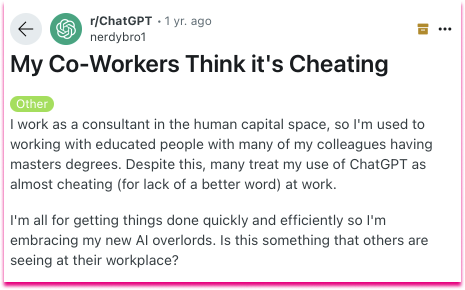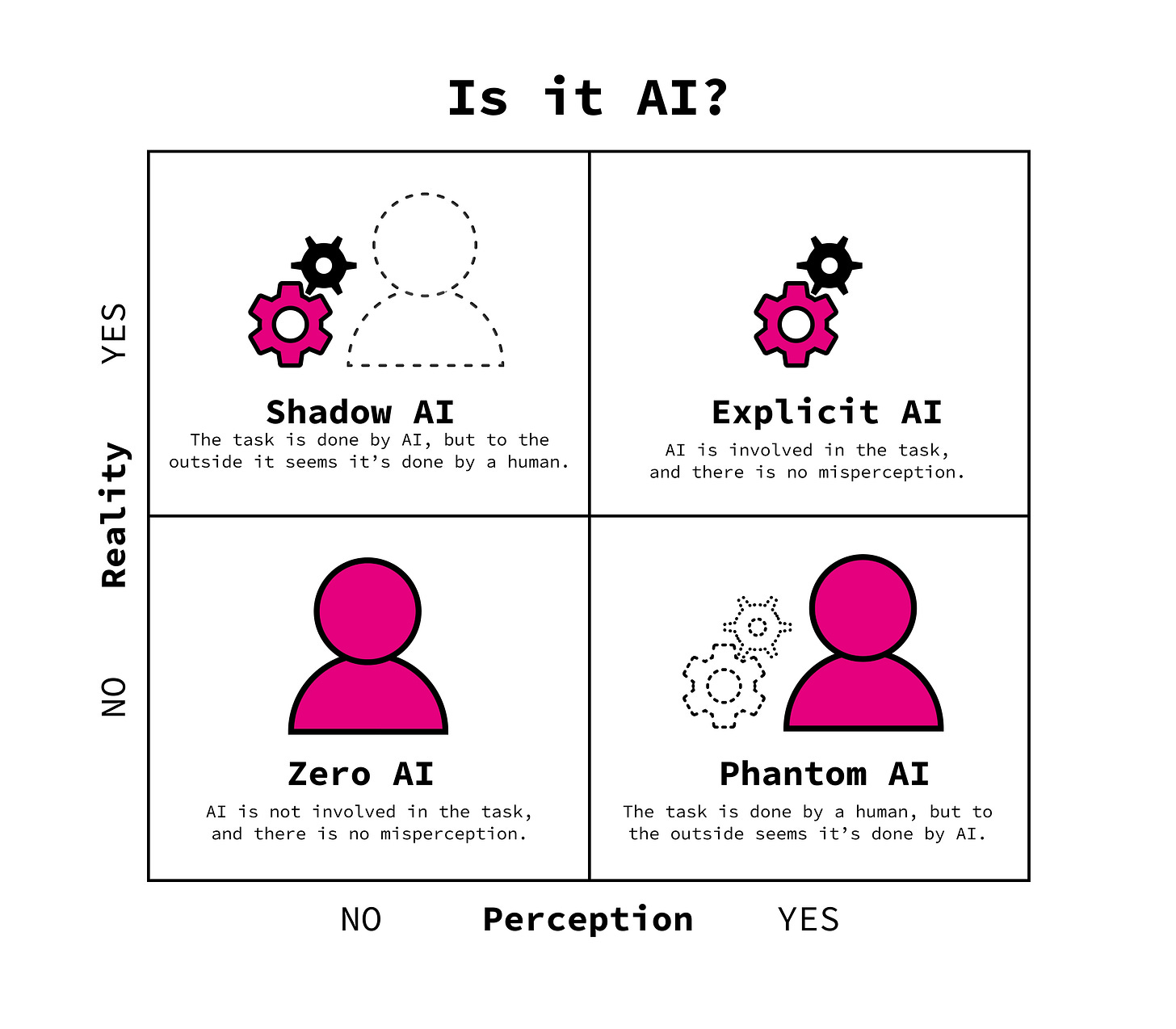Recently, someone I trust a lot confided in me. “I can’t stand working with John. The stuff he produces… it’s clearly ChatGPT. He’s cheating!” The Twist? I knew John had done the work himself, without any AI assistance.
This senario isn’t unique. The Internet is teeming with stories of people accused of using AI in their job applications, school assignments, or work tasks. The stigma has grown so strong that people are hiding their legitimate AI use: “People think that it's kind of cheating”. Even using certain words, like “delve,” can earn you dirty looks these days! And experts share advice on how to avoid being falsely accused of AI use!
This growing phenomenon needs a name. In a recent "What's the Buzz" podcast episode with Andreas Welsch, I coined the term: Phantom AI.
What is Phantom AI?
Much like phantom limb syndrome, where amputees sense a missing limb, Phantom AI creates the perception of AI involvement where none exists. While harmless when AI assistance is expected, it becomes problematic when human effort is mistaken for AI output. Students face penalties, job applicants lose opportunities, and company culture suffers.

Phantom AI vs. Shadow AI
Shadow AI refers to employees secretly automating their tasks. Phantom AI is the opposite: employees perform tasks manually, but others perceive AI involvement. Silicon Valley startups have intentionally created this illusion, hiring humans to mimic AI systems. However, the unintentional cases—where no deception is intended—are more concerning and widespread.
Take a look at the image above. Both Shadow AI and Phantom AI are a mismatch of perception and reality. In Phantom AI, this mismatch can be created by human misperception (“John must be using AI”) or unreliable detection software (did I mention that some teachers, in their complete ignorance, ask ChatGPT if it wrote a given piece of text). Shadow AI is typically a result of intentional obfuscation of the use of algorithms. While Shadow AI, when dealt with well, can be quite beneficial to an organisation (think: grassroots innovation), Phantom AI is a bit more tricky: in majority of cases, there are no benefits of Phantom AI, the only outcomes are negative.
Addressing Phantom AI
If you're a leader or team member, consider these questions to avoid the pitfalls of Phantom AI:
Do you make assumptions about the tools your team members use? This is an unconscious bias. I keep catching myself thinking: “this was clearly written using an AI tool”. And even there is currently no reliable way of detecting AI content, there is one group of workers that is convinced they can do it: teachers (no, they cannot).
Are team members expressing concerns about (real or perceived) AI use by others? There are valid concerns about the use of generative AI tools in workplace. However, by now, most organisations worked out their policies in this space. There are many acceptable scenarios of use, and a blanket concern is something that needs to be addressed.
Do you promote open communication about AI use in your workplace? If AI is a taboo topic in your workplace, this might lead to secretive work culture. Employees might be afraid to share how they use AI (leading to the growth of Shadow AI) or wrongly assuming others of illegitimate AI use.
Consider these suggestions to mitigate the impact of Phantom AI on your organizational culture:
Establish clear guidelines for acceptable AI use in various tasks.
Encourage transparency about AI tool usage among team members.
Provide training on AI capabilities and limitations to reduce misperceptions.
Implement a process for addressing concerns about AI use fairly and objectively.
Focus on the quality and creativity of work outputs rather than the methods used to produce them (as long as rules are being followed).
The next time you're tempted to cry "AI!" at a colleague's impressive work, take a moment to consider whether you're sensing a ghost in the machine or just the phantom tingle of human ingenuity.
Thanks for reading! Since you made it all the way here, consider voting for my upcoming SXSW session in Austin, TX, in 2025. It’s quite competitive, and every vote counts. The best part? Once you vote, you will have access to the session’s recording immediately after it happened (plus all the other SXSW sessions!). Thanks in advance! Here is the link: https://panelpicker.sxsw.com/vote/152081.







Really useful Marek!